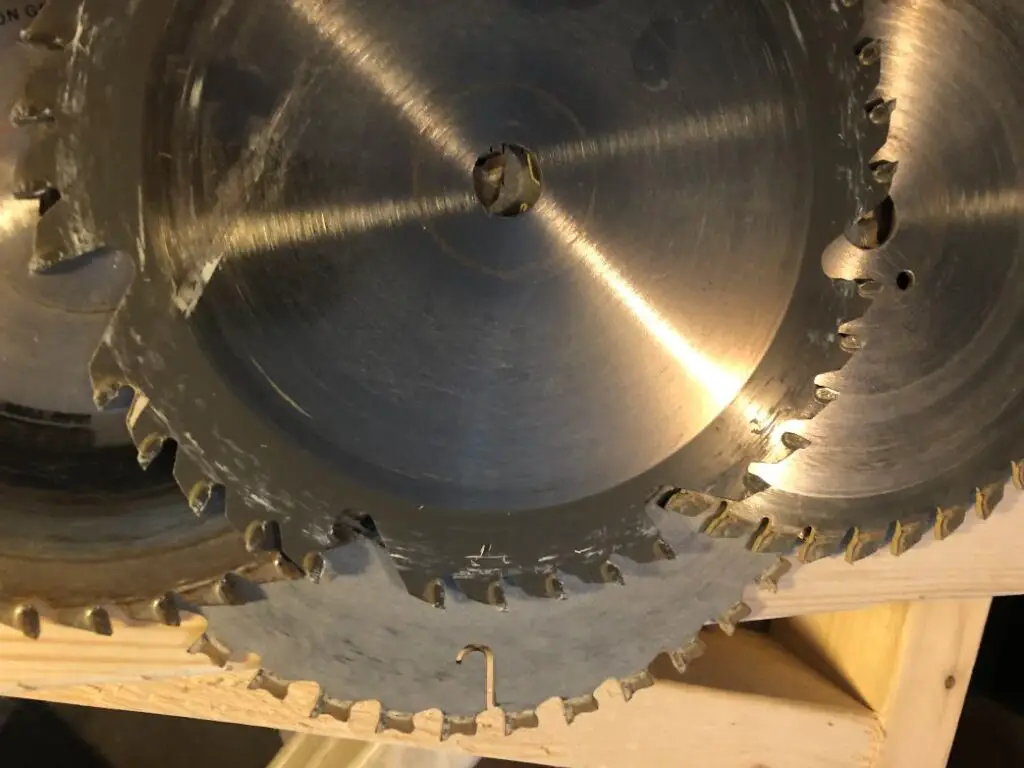One of the vital tools used by many carpenters and woodwork experts, a miter saw, uses blades with a wide range of tooth counts ranging from 14 to 120 teeth. What are 40 tooth miter saw blades good for and where do they fit into the mix?
To get precise and cleanest cuts, it will be ideal to use a miter saw blade with the correct number of teeth for a specific woodwork application. The type of wood being cut, the direction of the grain in relation to the saw blade, and its thickness will determine which blade type is suitable.
The desired result is one of the critical factors to consider when choosing the type of blade to buy based on the tooth counts. Miter saw blades with a lesser tooth count have the capability of cutting faster as compared to miter saw blades with a higher tooth count.
However, the cut’s quality is rougher, but this shouldn’t be a cause of alarm if you are a framer. This is the reason behind the popularity of the 40 tooth miter saw blade.
The 40 tooth miter saw blade is ideal for cutting plywood. However, melamine and veneered plywood are best cut with a miter saw blade with 60 or 80 teeth.
Unlike its high tooth counterparts miter saw blade that tends to yield slower cuts that could burn the wood material, the 40 tooth miter saw blade is much faster and efficient.
The gullets separating the teeth of the blade also determine if the cut will be clean or coarse. This type of saw blade is suitable for cutting a wide range of wood types with different thicknesses.
This piece will enlighten you on what a 40 tooth miter saw blade is good for.
Let’s get to details.
What is a 40 Tooth Saw Blade Used For?
A 40 tooth saw blade is a multipurpose saw blade. This type of blade saw is designed for more aggressive and faster cuts for different woods with minimal splinters and tear outs.
Less friction and heat are generated as the cuts are quick compared to the use of miter saw blades with a higher number of teeth. This saw blade is suitable for cutting 2×4’s framings as more emphasis is put on speed rather than on subtle finish.
The 40 tooth miter saw blade is also ideal for cutting plywood. When you want to save on time, this is the type of saw to go for. However, it is more suitable for rough cuts; thus, it may not be ideal for cutting expensive woods, which may need precision and clean cuts.
Here’s a video about a woodworker’s first hand experience dealing with 40 tooth blades:
Which Saw Blade Makes the Smoothest Cut?
With the wide range of saw blades available in the market, it can be a challenging hurdle when deciding on which saw blade to go for.
Depending on the smoothness of the cuts you intend to cut, you should go for a miter saw blade specially designed for smooth cuts.
Blades that have densely packed teeth tend to make the smoothest cuts. Blades with closely packed teeth and small gullets tend to give more precise and accurate cuts that are small and with minimal wastage.
To get the smoothest mitre saw cuts for the building of furniture, trim work, and cabinet making, you require a saw blade with a lot of teeth. A good trim blade usually has around 80 teeth.
However, for the finest and the smoothest of cuts, a miter saw blade with about 90 to 100 teeth is recommended. Saw blades with a lower tooth count won’t give the smoothest cuts due to a wide space between the gullets.
Although a miter saw blade with a bigger tooth count would give you the smoothest cuts, the cuts tend to be slower as compared to blades with lower tooth count.
When working on expensive wood pieces, it will be best if you opt to use a saw blade with densely packed teeth to avoid wastage and clean and tidy work.
How Many Teeth does it take to Rip Wood?
The number of teeth of a saw blade will determine its functionality. Rip-cut saw blades designed for cutting wood grain, that is along the board’s length have a lower tooth count between 16 and 40.
The teeth are craftily designed for aggressive cuts. It also have deep gullets which facilitate good chip removal.
The space between the teeth as commonly referred to as the gullet, is wider to facilitate easy and quick ripping of different types of wood.
Saw blades with a lower tooth count are robust for easy ripping of woods as compared to those with a bigger tooth count.
It is important to note that the number of the blade teeth will determine the type, finish, and cut speed. Using the wrong blade will be cumbersome and time-wasting and lead to poorly done work.
Most of the 40 tooth miter saw blades, which are ideal for ripping wood, are fitted with expansion slots that cut into the trim.
This feature helps to prevent the saw blade from warping as it contracts and expands during use. Vibration is also reduced, thus creating accurate and straighter cuts.
To increase efficiency, precision, and accuracy, it is recommended that you use the right miter saw blade for the proper function.
Saw blades with a lower tooth count are specially designed for rough and aggressive ripping and cutting woods, while miter saw blades with a bigger tooth count are ideal for smooth and clean cuts.
The 40 tooth miter saw blade is ideal for 2×4’s frame cuttings where no emphasis is put on smoothness. It is suitable for quick ripping of woods.

